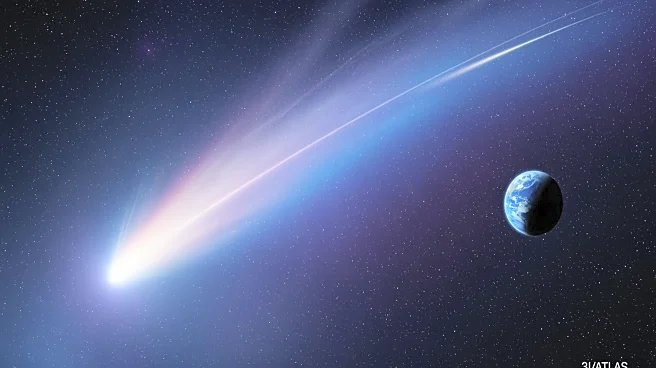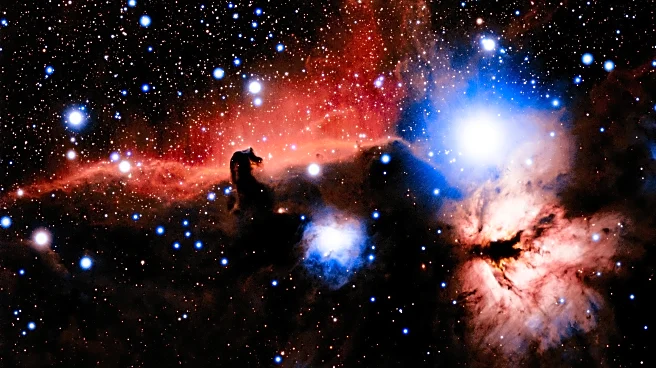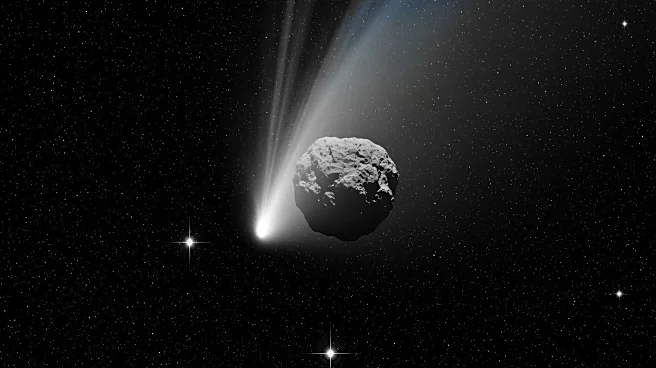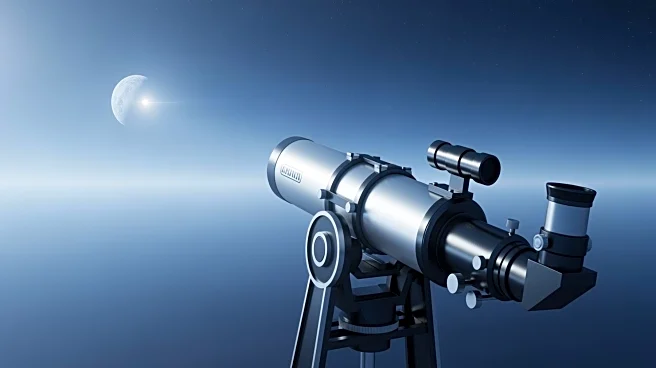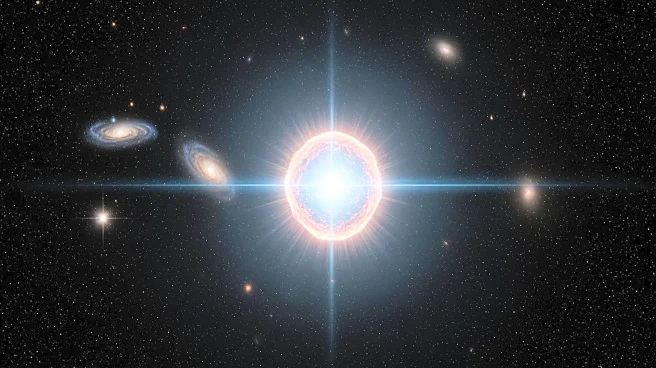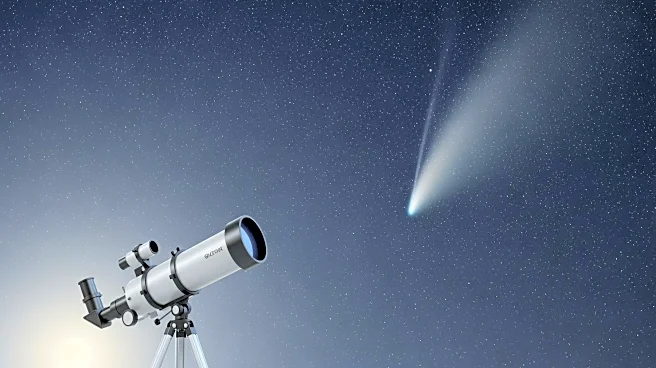What's Happening?
NASA has identified Comet 3I/ATLAS as an interstellar object, marking it as the third confirmed visitor from outside our solar system. The comet is on a hyperbolic trajectory, indicating it is not gravitationally bound to the Sun and will eventually leave
the solar system. It is expected to make its closest approach to the Sun today, at a distance of approximately 1.36 astronomical units. Following this, the comet will become visible again around November 11 in the eastern sky before dawn, though it will require large telescopes for observation as it will not be visible to the naked eye.
Why It's Important?
The identification of Comet 3I/ATLAS as an interstellar object is significant as it adds to the limited number of known interstellar visitors, providing a rare opportunity for scientific study. Understanding such objects can offer insights into the composition and behavior of celestial bodies from beyond our solar system. While there has been speculation about the comet's nature, NASA maintains that it poses no threat to Earth, which is crucial for public reassurance and scientific focus on observation rather than mitigation.
What's Next?
Comet 3I/ATLAS is expected to reappear in the eastern predawn sky on November 11, offering astronomers a chance to study it further. The scientific community will likely continue to monitor its trajectory and characteristics to gather more data on interstellar objects. This could lead to advancements in our understanding of the solar system's interactions with interstellar space.
